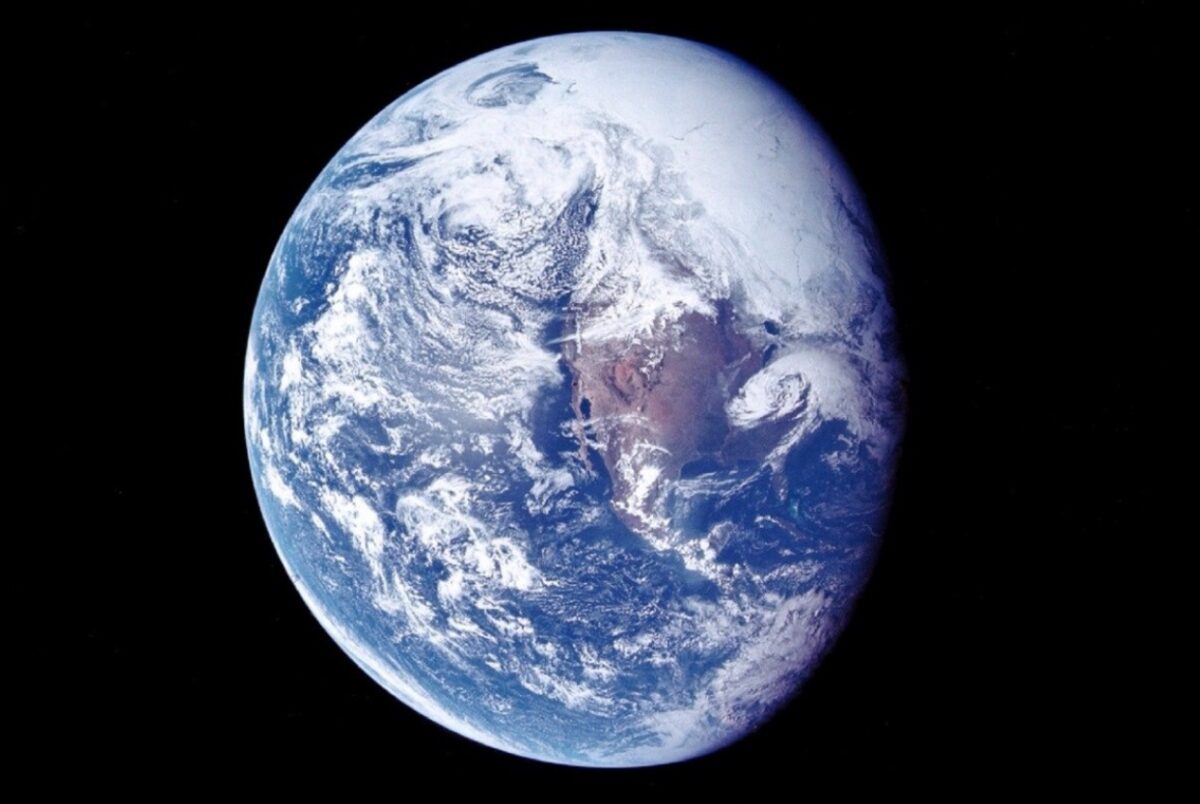By Kathleen Hillery
Human-accelerated climate change is the most urgent crisis of our time. Each successive iteration of the Intergovernmental Panel on Climate Change hammers home the increasingly desperate environmental come-back necessary to prevent cascading disruption to ocean currents, biodiversity, and humanity’s way of life.
Scientists have published robust studies confirming human activity has caused atmospheric greenhouse gas concentrations and average global temperatures to climb faster than any time in 800,000 years. Communities are evacuating regions destroyed by rising sea levels, firestorms, and increasingly violent weather. Eighteen percent of the human population lives in India, averaging individual carbon footprints of 0.7 Earths. Eighteen percent lives in China, with an average individual carbon footprint of 2.2 Earths. The United States is home to only four percent of the world’s population. If the world’s roughly eight billion people all lived like the average U.S. consumer of cheap, single-use materials, we would need five Earths. The pace of consumption is unsustainable.
This World is On Fire
Biological diversity is critical for ecological balance, without which ecosystems cannot function optimally. In 2019, the Bramble Cay melomys in Australia became the first mammalian extinction due to climate change. Halfway across the globe, over 2.1 million acres of forests in British Columbia burned due to wildfires from April 2021 to March 2022.

The stunning Sequoia, an ancient treasure of the North American continent, are at risk from the Washburn wildfire raging in Yosemite National Park this month. The General Sherman Sequoia, the single largest living thing on Earth by volume, can sequester more than 1,400 metric tons of carbon dioxide. To lose those trees or the Redwoods, as well as the rainforests in the Amazon basin and the Congo–all threatened by the spread of wildfires driven in part by climate change effects and in part by deforestation–would be a devastating casualty in the fight against greenhouse gas emissions.

Shifting weather patterns will affect most seriously the latitudes between the Tropics of Cancer and Capricorn, especially in coastal areas susceptible to flooding and agricultural land at risk from drought. By 2050, climate change effects could displace as many as 1.2 billion people internationally. In October 2021, the United Nations Environment Programme (UNEP) released its annual Emissions Gap Report. The report detailed that even best-case responses to climate change would result in an additional 2.2 degrees Celsius increase in global temperatures this century, higher than the 1.5 degrees Celsius threshold for minimizing severe climate change effects.
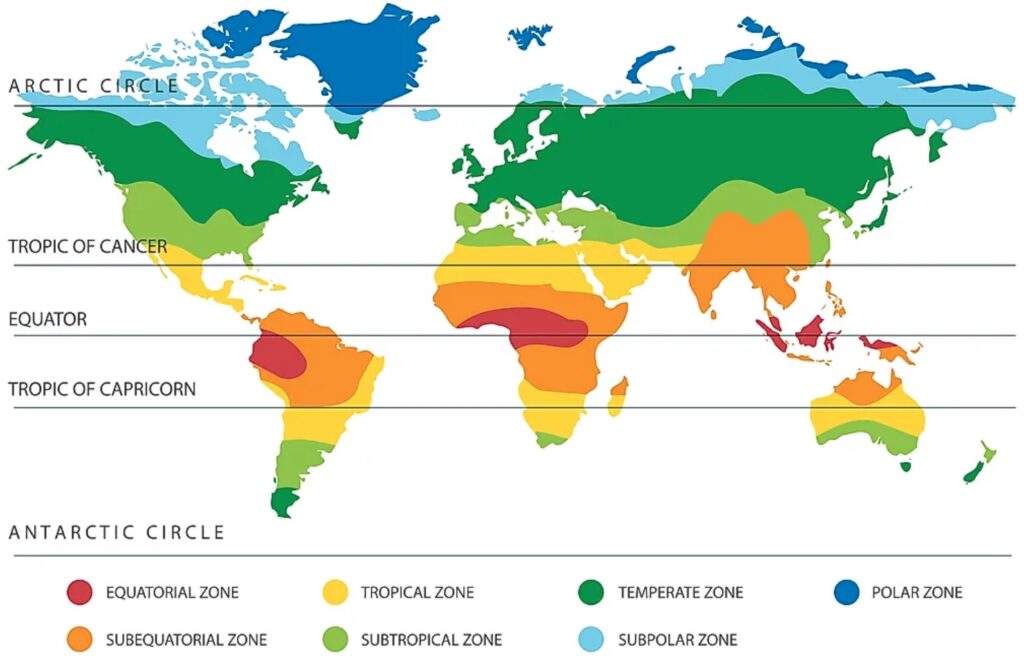
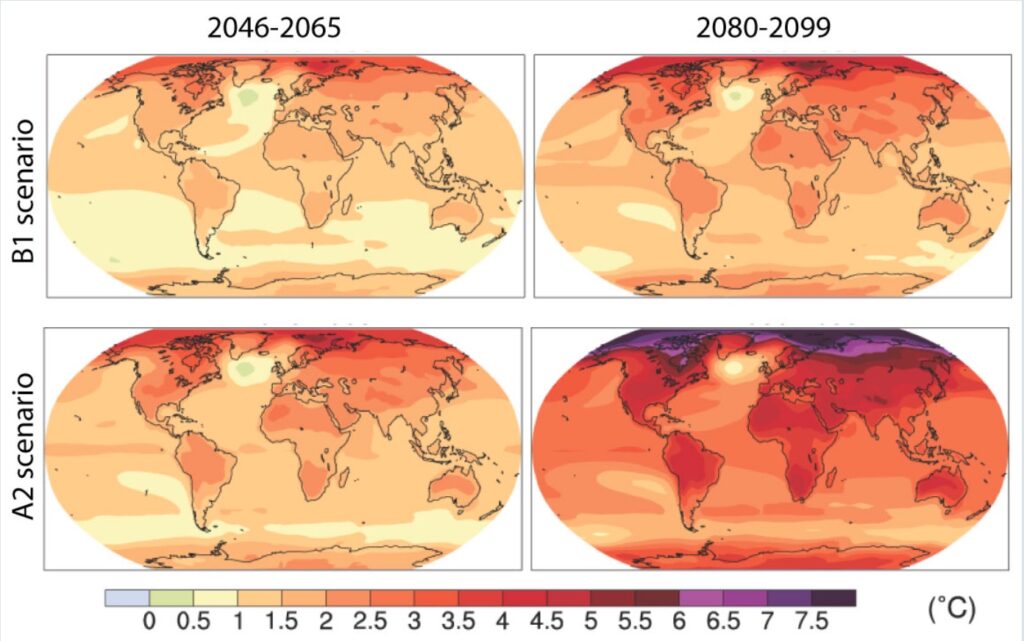
The Atlantic hurricane season runs from June to November each year. Like each hurricane season for the last eight years, the 2022 season began early with intense storms powered by the warming waters of the Atlantic Ocean projected through the rest of the season. Four tropical events may achieve major hurricane status, more than the average across the 1991 to 2020 seasons. Tropical Storm Colin formed overnight on July 2, surprising the National Weather Service and National Hurricane Center.
In the U.S. alone, 20 natural disasters occurred in 2021, with the cost of damages exceeding $1 billion each. Climate change is not just about rising global average temperatures; three of the 2021 disasters involved weather traditionally tied to winter, including the winter storm that damaged the stand-alone Texas power grid. The climate crisis is about extreme weather events, weather instability, and the concatenating effects, not just the temperature on the thermometer.
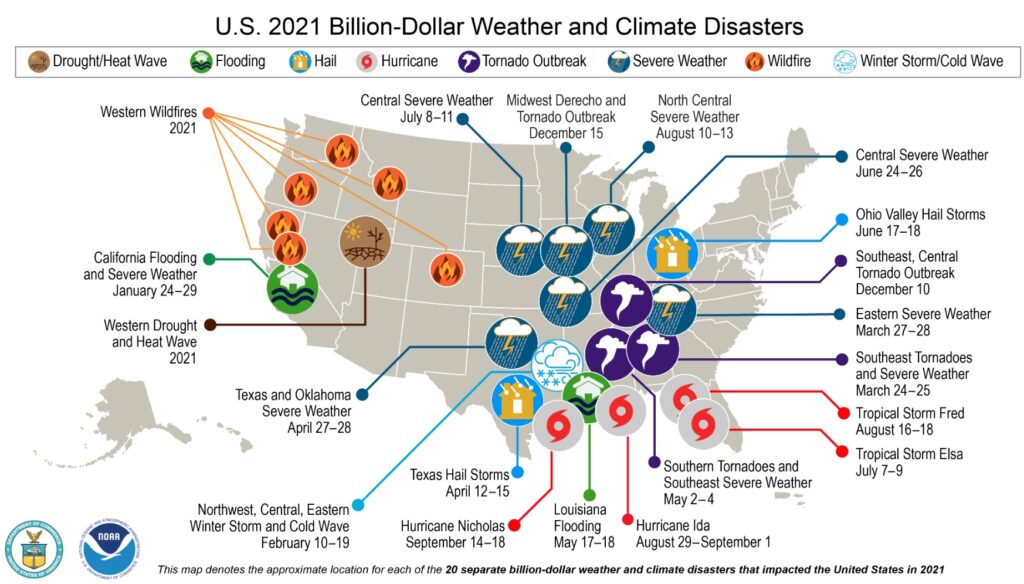
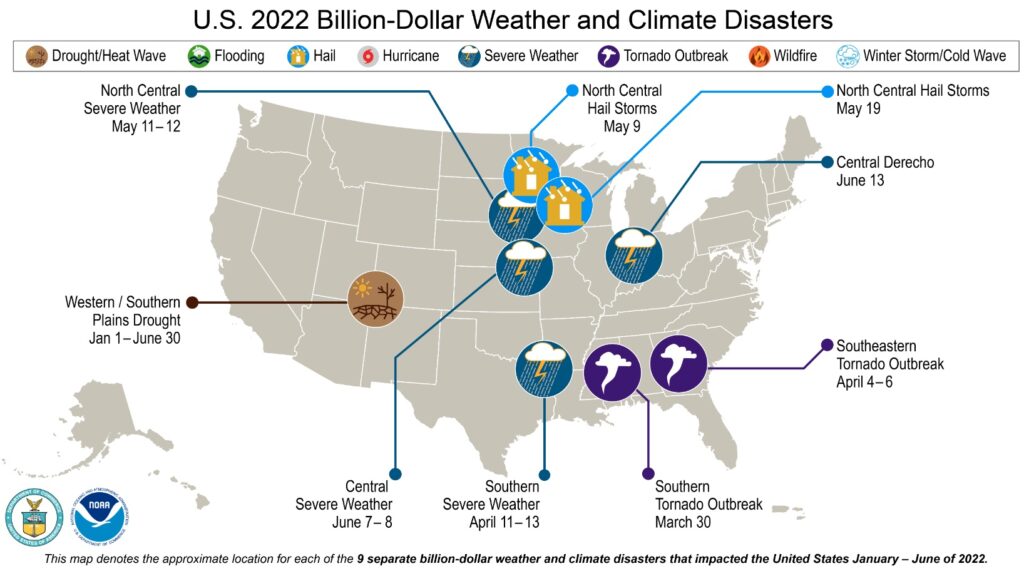
Natural disasters are not just fast-paced maelstroms. Natural disasters include the slow strangling of water supplies, rising ocean acidification, and the ever-shrinking glaciers. Glacier melt, on top of storm surge, will flood coastal regions and make them bad bets for insurers, further disrupting already precariously perched livelihoods. Recurring wildfires pose the same insurance challenges.
The Climate Gaslight
Industries, and their owners, have abused political leverage to avoid regulations designed to address the true social cost of resource extraction and production waste. The Stockholm Summit occurred 50 years ago, but those goals, and all subsequent climate summit goals, have been missed. In 2021, about 80 percent of global energy still came from fossil fuels. Governments have prioritized short-term, industry-focused policies while ignoring the concerns of scientists and environmentalists. The Keystone XL pipeline was one such project, a transnational dirty shale oil pipeline that leaked 383,000 gallons of oil into wetlands in North Dakota instead of just creating jobs.
Energy use from nonrenewable sources accounts for 73 percent of annual global emissions and agriculture for another 18 percent of emissions. Yet industries and many governments place the onus of accountability for responsible consumption on individuals. Keep your thermostat at such-and-such a temperature to relieve the power grid when it is boiling outside (or freezing). Take public transportation to work or school on public transport with unreliable infrastructure. Buy only seasonal fruits and vegetables even though the non-seasonal options remain on store shelves— although, those seasonal items may still not come from local producers.
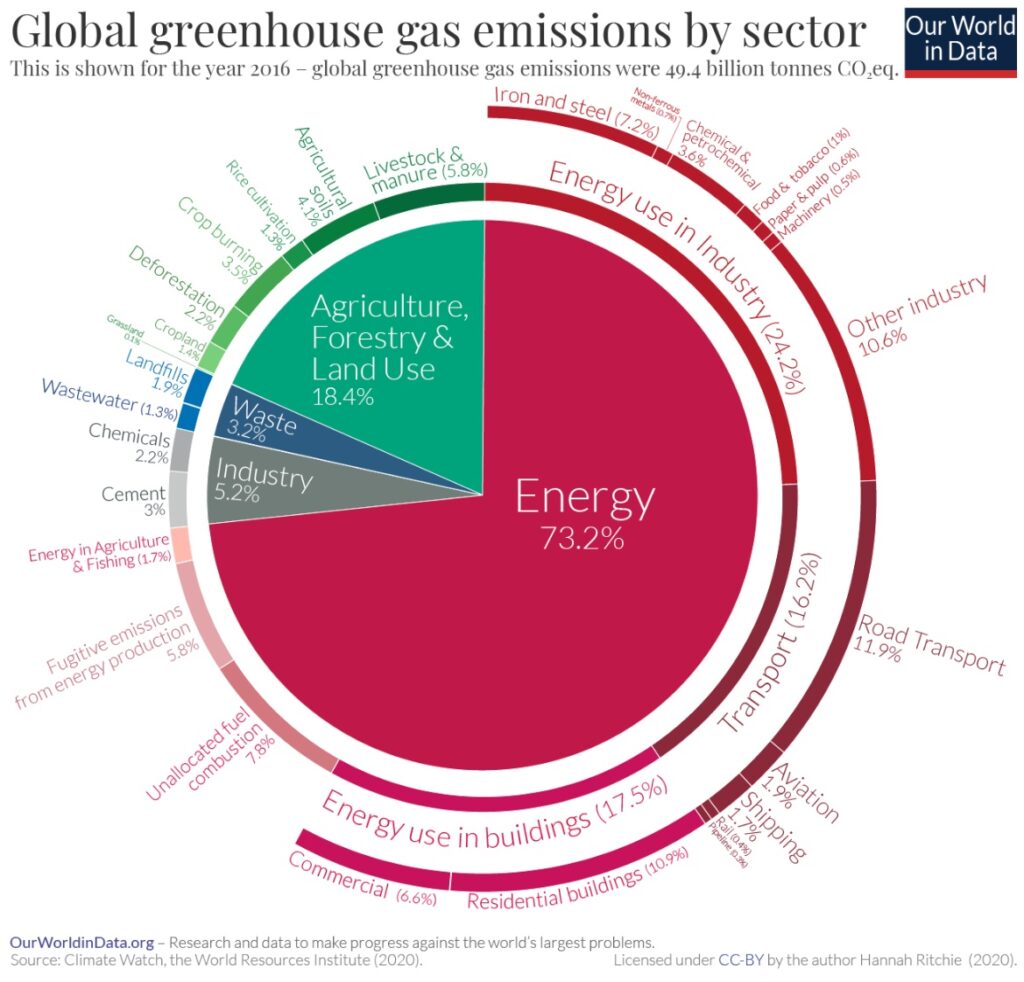
Indeed, people need reliable information about realistic small changes they can make that mitigate climate change when performed in aggregate. For example, each person who commits to a Meatless Monday reduces their carbon footprint by the equivalent of not driving 348 miles each year. However, corporations and governments must lead a successful behavior shift.
If we do not change, the average human-experienced temperature will rise 14 degrees Fahrenheit (7.8 degrees Celsius) by 2070, expanding inhospitable regions by 18 percent and affecting 30 percent of the human population. Climate instability will disrupt food production, exacerbating worldwide hunger and resource competition leading to regional instability and increased migration. Though not a term recognized by international refugee law, the number of climate refugees will continue to rise.
The Way Forward
Should we succumb to doomsday prophesying, throw up our hands and give up? Many scientists say “no.” Earth still has champions in the fight racing to develop mitigation and adaptation strategies to address climate change effects.
The key is rapid, meaningful action from the local to the international levels unimpeded by the personal interests of individual leaders and corporations. Governments must commit to actions, not more conferences with future targets that their legislatures debate in bad faith. Wealthy nations should acknowledge their influence and economic authority. Countries without one should establish a carbon tax. Encourage innovation by subsidizing companies pioneering technologies like direct air capture of carbon dioxide. Include subsidies for businesses that launch career pivot programs for employees during the shift to clean energy, preventing workers from assuming the whole burden of a changing labor market.
Businesses must stop lobbying for unsustainable energy sources and adopt responsible and sustainable production methods. Clean energy costs have plummeted and are accessible to the average consumer, opening up a supply market for proactive businesses to invest in infrastructure for renewable resources. Solar energy will become the cheapest renewable energy, especially in the large areas where 1.3 billion people have no electricity but plenty of sun. Additionally, agriculture accounts for half of all habitable land. Yielding only 18 percent of the world’s calorie supply, 77 percent of all agricultural land supports livestock production. Affordable meat substitutes would shrink the consequences of livestock production. In tandem with vertical food growth advances, both could minimize horizontal land expansion while still supplying adequate food quantities.
We must educate society about the dangers of relentless consumption. In the United States, 43 percent of people do not believe human activities caused the climate emergency. Publicize constant repetition of the science with the aim to move people toward sustainable habits. Reach large audiences via children’s programs, podcasts, and public service announcements. Use short local news segments to demonstrate small energy and food purchasing modifications that significantly change monetary savings and reduce emissions. By nurturing climate awareness, nonprofits can foster grassroots consumer movements. Empower people to continue fighting the climate crisis with strategies that also yield tangible savings and communal progress.
Yes, keeping your thermostat higher or lower depending on the time of year can relieve stress on power grids and benefit the environment. Consumers in the United States could save as much as 10 percent on their typical electric bill by following U.S. Department of Energy guidelines. Properly weatherizing new and existing homes also reduces energy use and cost. Still, energy companies must update their infrastructure to handle our new extremes.
Public transportation would be an easy and affordable change for many workers. Access to reliable and fast transport may even allow renters to move to places with more affordable housing between major metropolitan centers. In the United States, however, high-speed rail remains a concept and not a reality, forcing people to congregate in cities with worsening traffic and rising emissions.
And suppose we could figure out a way to negotiate our foreign trade agreements such that we only buy food in season. In that case, we might be able to reduce the emissions from international shipping while also transferring some capital to local farmers.
Running Out of Time
Humans have unlimited wants and very limited resources. By 2050, nearly 10 billion people will live on Earth. Sea levels are projected to rise by one foot (0.3 meters), leaving less land above water to support them. There are just seven years left until human science can no longer even dream of mitigating the effects of climate change. If emissions continue at their current rate, successful human adaptation becomes unlikely, too.
The nexus of policy impacted by climate change is vast. The challenge is not impossible if governments and industries make decisions that acknowledge the climate crisis is real and has been here. Now is the time for cooperation among sovereign governments against an international peril that will spare no one. Businesses must realize there will be no profit if social infrastructure collapses. Responsible actions that start at the top create a system in which everyone could achieve climate-friendly solutions.
Every decision to save Earth, or not, interconnects. We must create a society where every person and organization regulates their consumption in synergy; otherwise, in three to four human lifetimes, we will exhaust the planet. We must all be eco-conscious if our children are to inherit the Earth, even though it may be a world striving to recover. We can succeed if we become an international, multi-pronged force dedicated to halting climate change.

